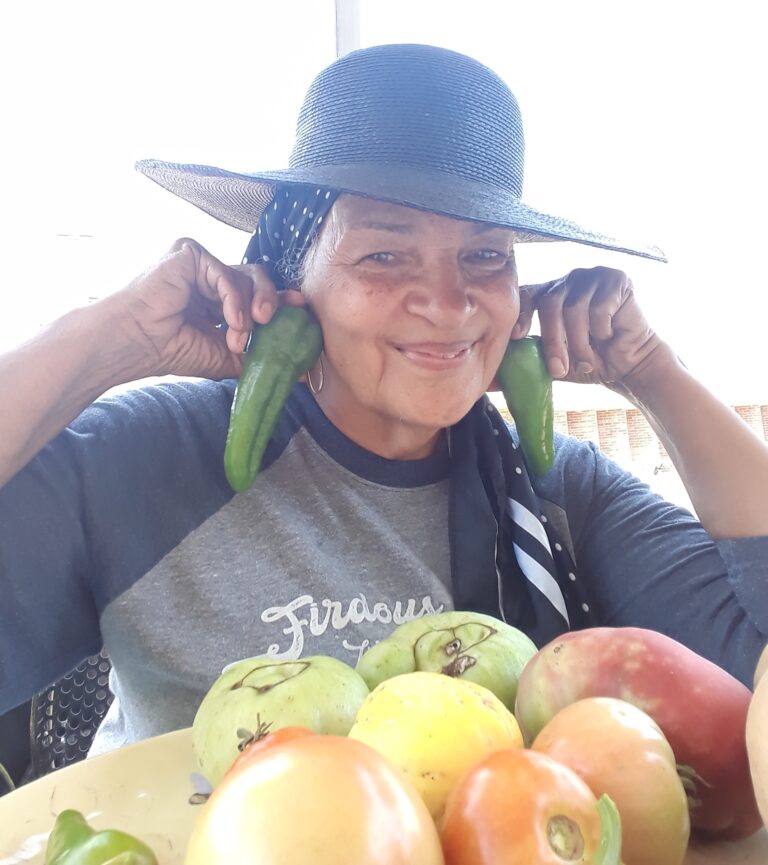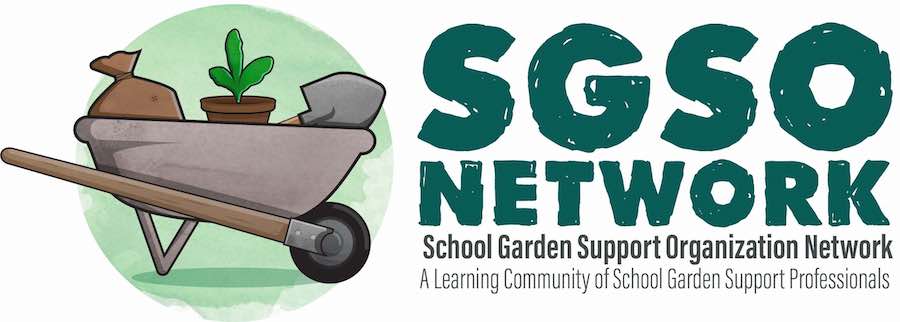Member spotlight
Sister Terri Ali
Farmer
Firdous Community Garden at Mohammed Schools of Atlanta – Atlanta, GA
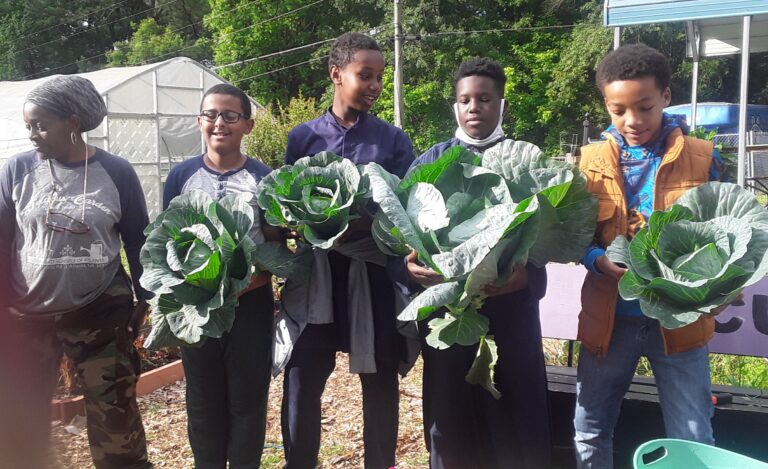
Read on for an interview with Sister Terri Ali of Mohammed Schools of Atlanta in Atlanta, GA focused on how their school garden is in relationship with their local community, allowing them to harvest excess produce when school is on break.
Please give us an overview about your garden program and how it operates.
Mohammed Schools of Atlanta sits on four acres of urban land located in the inner city of Atlanta, Georgia and has a USDA Farm number. Our garden is managed by our Farmer, Sister Terri Ali along with 18 volunteers and the student body. She brought the garden to the school from her backyard.
The growing area encompasses about a quarter of an acre, consisting of twenty 4×8 beds for produce plus three beds for herbs, roughly 350 square feet of growing space and a 30×20 wind tunnel providing an additional 350 square feet. This growth has happened from one garden bed in 2014.
Students and volunteers help with planting, cleaning, watering, and harvesting. It is naturally grown with no pesticides or artificial enhancements. The food is used for snacks, experiments, and the local community market. Our volunteers also participate on the Mohammed Schools Health & Wellness Committee, [which] is representative of the local community: school administration, urban farmers, cafeteria cook, parents, students, board Members and community members. Planning, funding and integration of gardening into the curriculum is ongoing and purposeful. The whole school is involved.
Mohammed Schools of Atlanta is an accredited institution for grades Pre-K thru 12th grade and is a 501c3 entity located at 735 Fayetteville Rd, Atlanta, GA 30316. We [have been] a small private school located in urban Atlanta for 40 years.
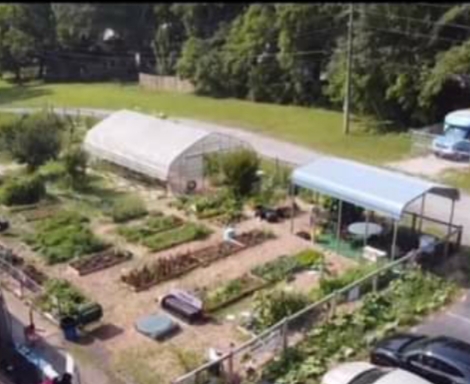
Tell us about your school garden community.
Our population and surrounding community are mainly African American and there is a history of health concerns associated with inner city living coupled with poor foods. With the onslaught of this pandemic came a myriad of additional problems with the lack of fresh food access. Far too many fast-food chains, liquor stores and gas stations contribute to this by offering inexpensive packaged poor grade food. We have embarked on this fresh food journey to feed our community, students, staff, parents and neighborhood
Parents, volunteers, and students have built the 20 beds, and an orchard over the last 8 years. Our community supports the garden and the establishment of fresh food options in our school and community. We are in partnership with other local growers to continue learning best practice for sustainable clean food. Through trial and proven methods, we are learning to grow organic and naturally grown produce. Learning to work with the gifts of the earth, insects and wildlife, it takes many hands to produce good healthy food.
We also belong to a community of urban growers. Together, we share resources, aid one another and labor for one another.
Is the produce taken home by students or community members?
Students take home garden produce on demand and may fix snacks, tea and meals as they have time to do [so], which is usually allowed by their teachers.
Community respects the school openings and closings so that when school is in session community folk do not pick until a notice is sent out. [This is communicated through] signs in the garden, posting on Facebook, and word of mouth.
In Summer or over break times, when kids are not at the school for extended periods of time, the community may pick on demand. They also help clean, weed, water etc. We ask when harvesting, that the community please take only what their family wants to eat, and take only enough for [their] family to eat in one or two days.
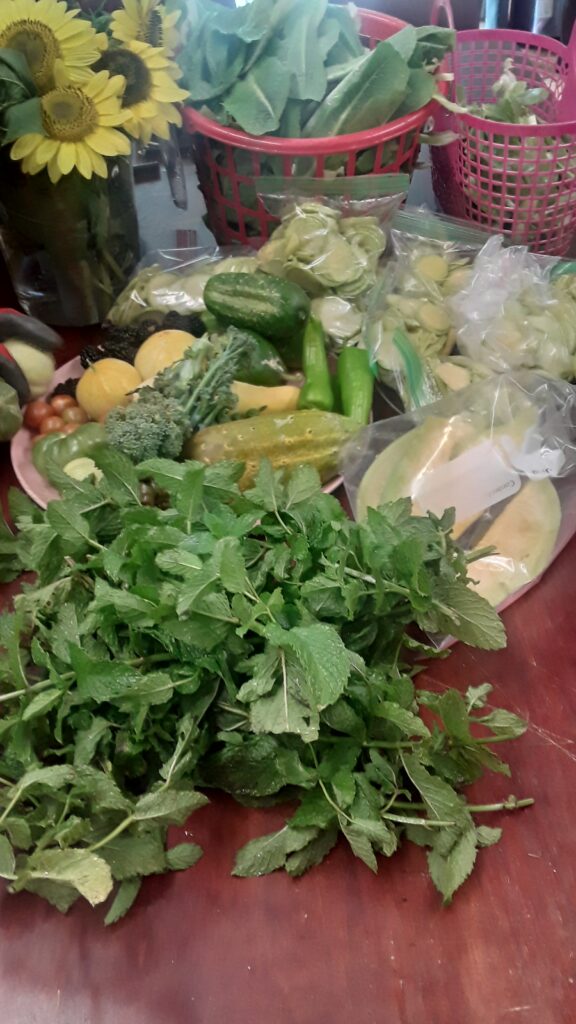
About how much produce do you share with your community?
Currently we do not weigh or tally what is used or eaten we just nurture and grow, because the garden is open 365 days. There are four accessible entries that are never locked so we haven’t figured out how to control use, nor do we want to. However, we are looking for simple ways to draw logical conclusions on consumption.
How are youth or students involved in harvesting the produce?
Garden classes are mandatory weekly education and practice. The garden room opens to the garden. The garden room has supplies for tea, salad and snack making. For the cafeteria, our goal is to get some of the food into the lunch. A full episode of Garden to Plate is a cycle – plant, maintain, harvest, prep and get to the cafeteria is a cycle. In the 2022-2023 school year we had 7 cycles.
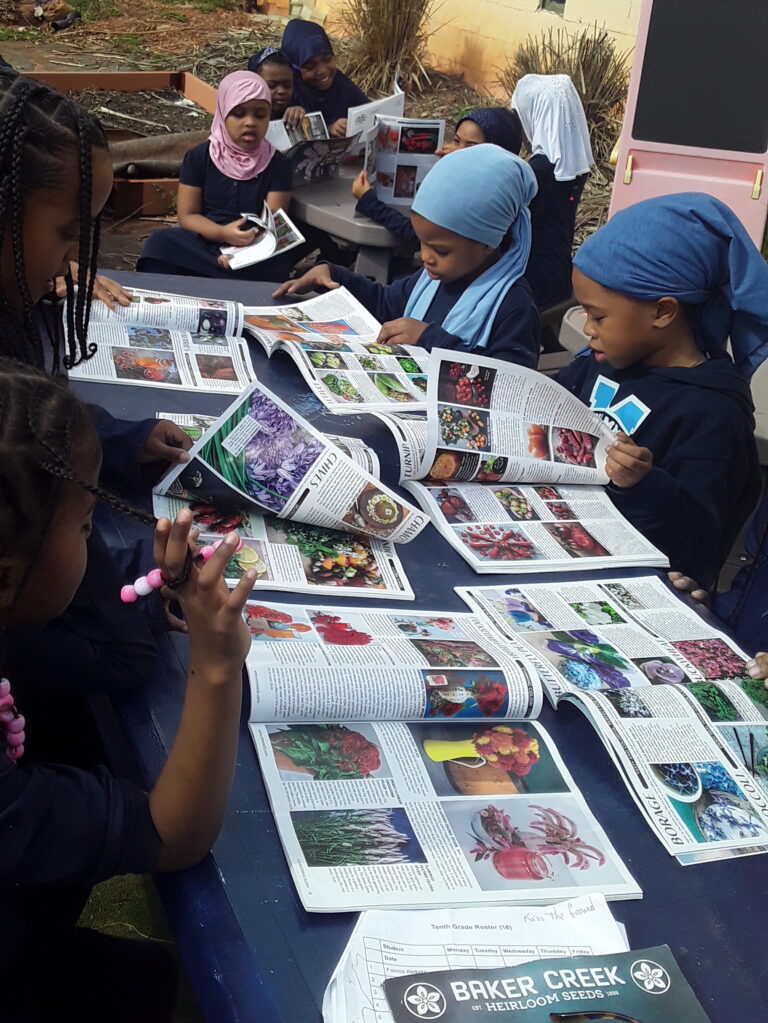
Please share specifics on the processes. In other words, if someone wanted to do something similar to your program, how would they do that?
Conversations and relationships mean everything. Listening to others and sharing your thoughts about fresh foods, health and wellness and using language that helps the school achieve their goals. In project-based learning, learning modules, lesson Plans, and pathways to graduation, language matters. Each person matters from the little kids to the elders. A robust garden depends on many hands, so a meeting of minds and hearts is so necessary.
What supplies do you use?
Start with one garden plot or one bed and build from there. Don’t spend money. Instead have all interested bring a little something from home. Over the years our local USDA NRCS offices, Cooperative Extension, Dekalb County Water, compost, local funders etc. all help our garden.
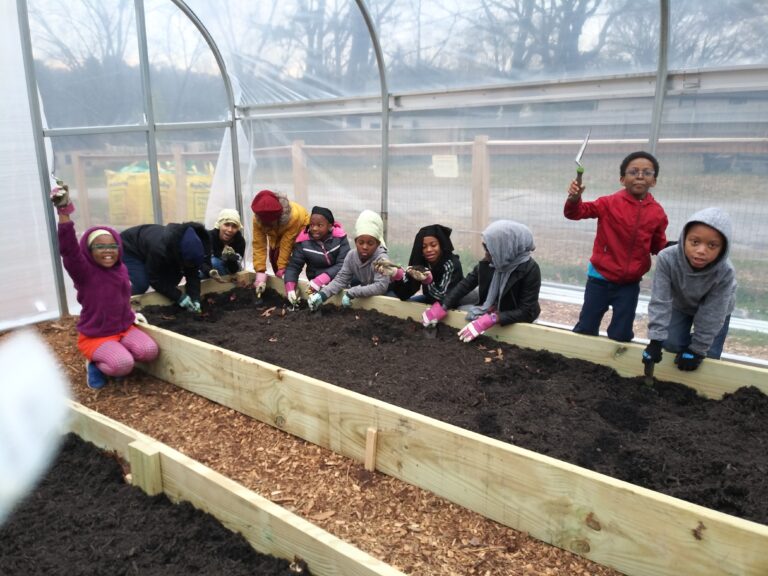
What health and safety protocols do you follow?
We have handwashing stations throughout the garden. Classes on how to consume produce, herbs, flowers etc. Our cafeteria staff teach Servesafe guidelines to our classes and community.
Please share any remaining thoughts or information.
A garden will die if not cared for, the proof is the robust abundance of our garden. So many hands and hearts are at work. Garden work is an extension of the Science program and is graded for students. Parents and families are diverse and they share their desires about how to use the garden space and what to grow. It works. We have several outdoor classrooms and sitting spaces that can be accessed 365 days a year. The garden team of volunteers has much latitude in deciding plants, events, etc.
